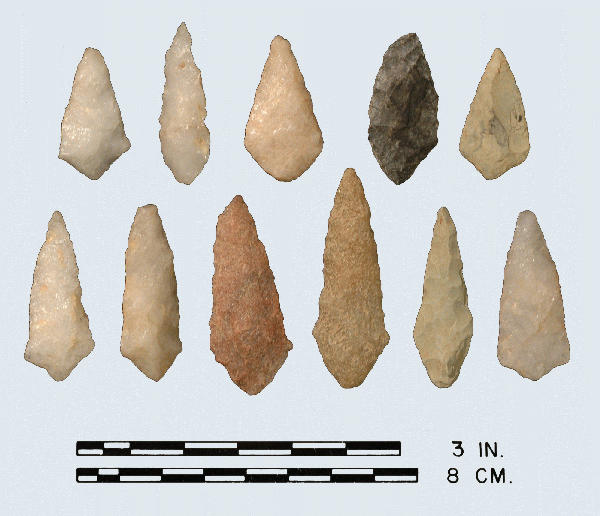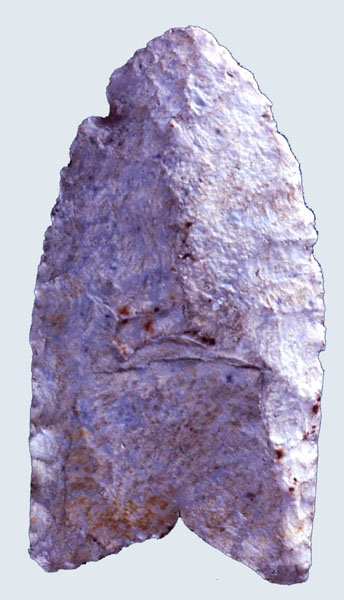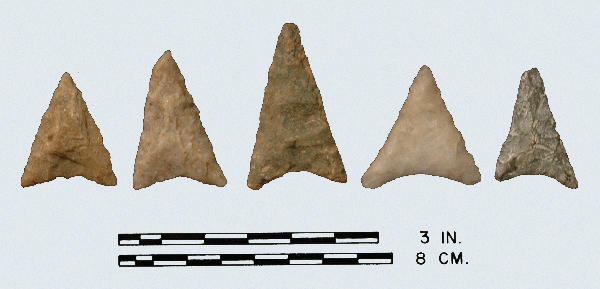
Piscataway: Top Row: quartz, quartz, quartz, chert, tuff; Bottom Row: quartz, quartz, quartzite, quartzite, tuff, quartz.
Type Tapering Early Woodland
Defining Attributes
The Piscataway is typically a small, narrow, thick point with rudimentary shoulders, a sharp tip, contracting stem, and pointed or rounded base.
Chronology
The Piscataway point dates to the Early Woodland period, 1000 to 500 BCE. This placement is based on the repeated occurrence of the type on Early Woodland sites on Elk Island in Goochland County (Mouer et al. 1981).
Description
- Blade: The blade is typically a long, slender triangle with straight or convex edges.
- Base: The base is rounded or pointed. The stem is small and contracting with an almost imperceptible shoulder separating it from the blade.
- Size: Length ranges from 29 to 49 mm. with an average of 37 mm. Width ranges from 10 to 21 mm. with an average of 14 mm. Thickness ranges from 5 to 10 mm. with an average of 7 mm.
- Technique of manufacture: Well made by pressure flaking on all surfaces.
Discussion
The Piscataway point is similar to the Rossville type, but smaller and narrower, with a smaller stem. Some researchers believe that the Piscataway and Rossville types are the same and date to the Middle Woodland period (Dent 1995). The narrow, finely flaked Piscataway point is reminiscent of the Will’s Cove point of the Early Woodland period. The main difference is that the Piscataway point has a tapered stem and the Will’s Cove has a square stem.
Defined in Literature
This type was originally defined by Stephenson (1963) based on points recovered from the Accokeek Creek Site in Maryland.
References



